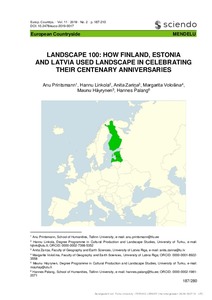Everyday reading cultures of Finnish immigrant communities
Anne Heimo; Kirsti Salmi-Niklander
https://urn.fi/URN:NBN:fi-fe2021042826063
Tiivistelmä
The article is based on our fieldwork among Finnish immigrant communities in Australia, Canada and the United States. Reading was highly valued, and in addition to publications brought and sent from Finland, Finnish communities were active publishers of books, newspapers and documents and maintained libraries. Today many of these activities take place in different forms on the Internet, blogs, Facebook and other social media and websites. For many, Finnish books and other forms of print continue to be cherished artefacts, although they no longer understand Finnish.In this article we focus on some specific issues we have encountered while studying the reading cultures of Finnish immigrant communities in North America and Australia. Our research material consists of interviews conducted among people of Finnish ancestry, life writings and other archival records as well as online and offline publications produced and maintained by these communities. We see that the study of immigrant reading cultures requires the applying of mixed methods: interviewing, the narrative analysis of various types of ‘memory texts’, participant observation, Internet and book ethnography and visual documentation. In immigrant communities fieldwork is often highly interactive, because the researcher is also expected to act as translator and interpreter of documents related to family and community history, which the members of the community themselves can no longer understand.
Kokoelmat
- Rinnakkaistallenteet [27094]
